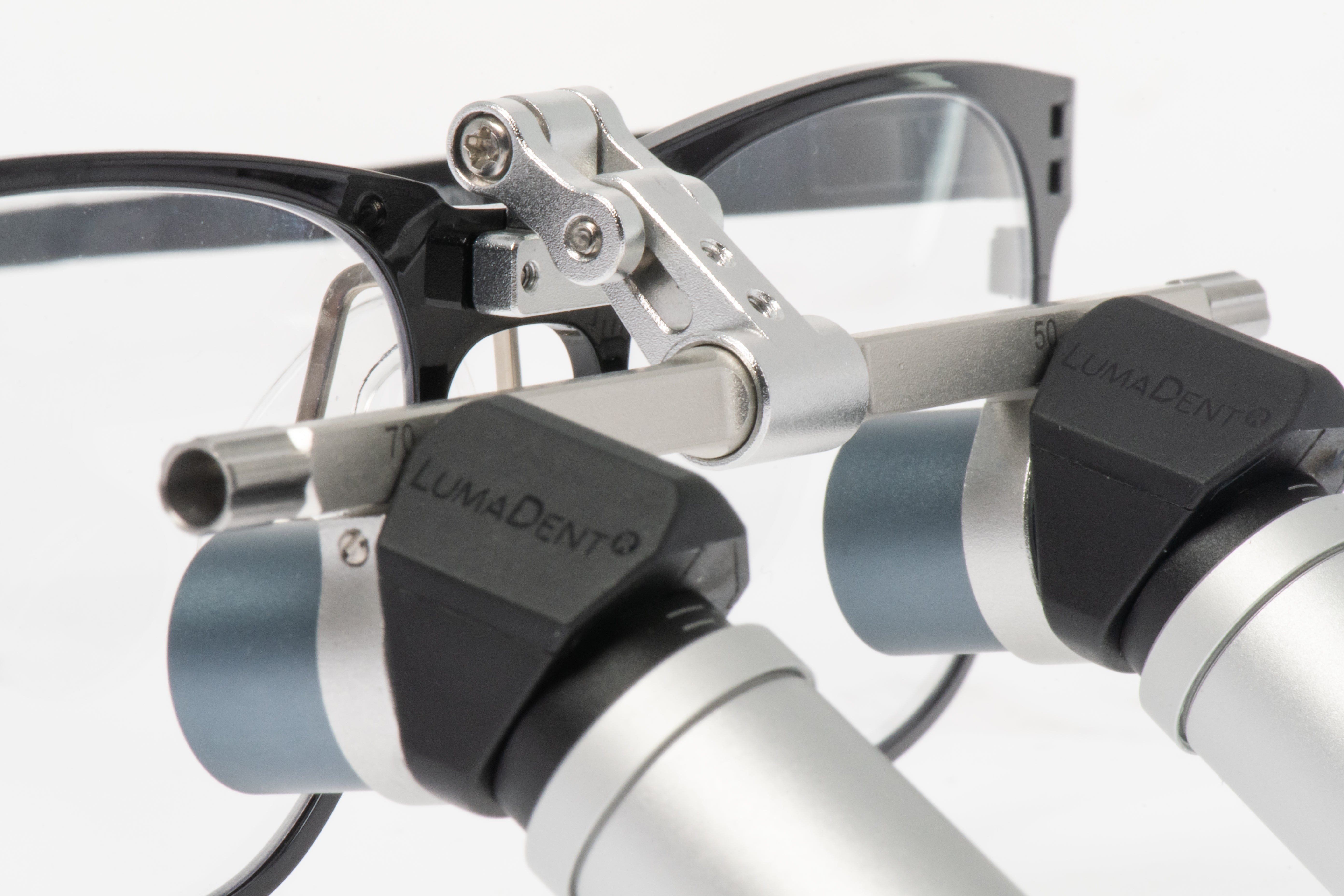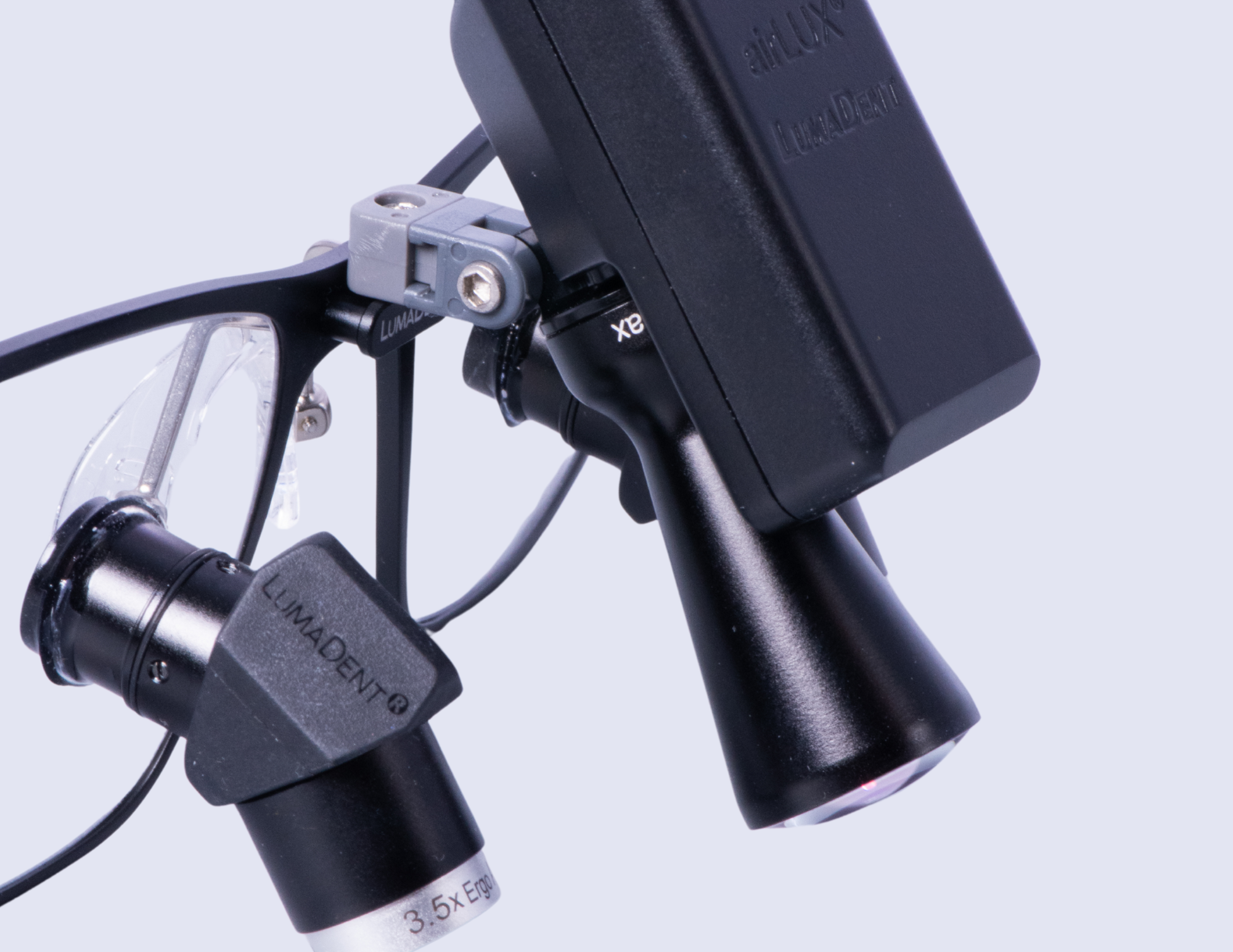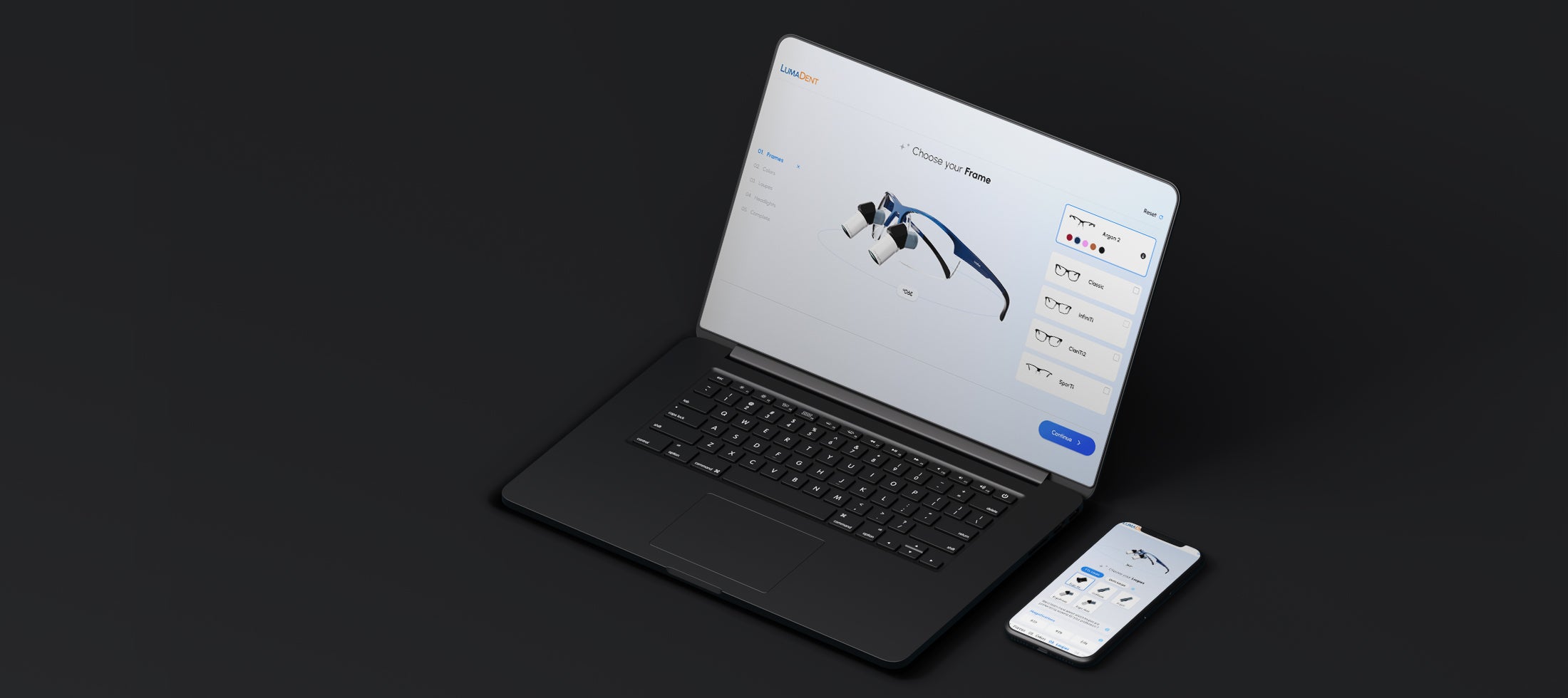Ergonomic Stretching Isn’t Optional in Dentistry
Dentistry is a beautiful profession… until your spine files a formal complaint. Whether you're crouched over a patient or holding the world’s tiniest mirror at a 45-degree angle for hours, the result is the same: microtrauma from static postures that adds up to major pain.
The fix? Not quitting your job and opening a smoothie shack (tempting, though). It's movement, micro-breaks, and yes, intentional stretching designed for dental professionals.
At LumaDent, we’re not just here to light up your workspace, we’re on a mission to extend your career with smart ergonomic strategies that protect your body, boost your comfort, and help you keep doing the work you love.
At the end of the day, you don't want to go home in pain.
Let's fix your posture.
(and pain)

The Top Stretches Every Dental Pro Should Be Doing
▶ 1. Neck / Upper Trap Stretch
✅ Great for post-loupe tension.
▶ 2. The Reversal
✅ Perfect for counteracting forward flexion.
▶ 3. The Un-Twister
✅ Bonus points if you breathe deeply and sigh dramatically.
▶ 4. Thoracic Extension
✅ A crowd favorite for hunchback prevention.
▶ 5. Wrist Flexor + Extensor Stretches
✅ Underrated but life-saving.
▶ 6. Eyeball Exercises
✅ For loupe users and screen zombies alike.
Here’s your go-to lineup, curated by ergonomic and posture experts who know the operatory grind. Reference the Dental Ergonomic Guide at the end (yes, save it, print it, love it), and make these part of your daily rhythm.

Stretching Is More Than a Vibe, It's a Science
Stretching isn’t a luxury, it’s a biomechanical necessity when your job involves micro-movements, awkward angles, and 45° neck cranks for 8+ hours a day.
Let's dive into what is really happening to your body when you stretch:
Neuromuscular Reset
Stretching stimulates the muscle spindle reflex, helping recalibrate your nervous system’s tension set points.
➡️ This means fewer spasms, better range of motion, and less “frozen robot mode” between patients.
Improved Circulation & Nutrient Delivery
Static postures reduce blood flow. Stretching reactivates circulation to oxygen-starved tissues, improving delivery of:
- O₂ (for cell health)
- Nutrients (for recovery)
- Lymphatic drainage (goodbye, inflammation)
Joint Rehydration & Synovial Fluid Movement
Movement encourages synovial fluid to circulate within joints, especially:
- Cervical spine (neck)
- Thoracic spine (mid-back)
- Radiocarpal joint (wrists)
➡️ This keeps your joints “lubricated” and mobile, reducing long-term wear-and-tear.
Postural Realignment
Stretching helps restore muscular balance between:
- Tight agonists (like your pecs & upper traps)
- Weak antagonists (like your rhomboids & deep neck flexors)
It also combats:
✔️ Forward head posture
✔️ Rounded shoulders
✔️ Thoracic kyphosis
✔️ Compressed lumbar spine
Prevention of Cumulative Trauma Disorders (CTDs)
Most dental professionals don’t suffer acute injuries—they get worn down.
Stretching helps reduce risks of:
- Thoracic Outlet Syndrome
- Carpal Tunnel
- Cervical Radiculopathy
- Chronic low back pain
Think of it as micro-maintenance for macro-career longevity.
Fascial Health & Mobility
Stretching maintains fascial elasticity, preventing adhesions and muscle binding (a silent productivity killer).
➡️ Healthy fascia = fewer knots, better glide, more efficient movement.
Mental Reset & Stress Relief
Muscle tension = mental tension. Taking 60 seconds to stretch can downregulate your sympathetic nervous system (fight or flight) and activate parasympathetic tone (rest and digest).
Result?
- Less stress.
- More clarity.
- Better chairside presence.
When to Stretch (aka: Find Your Awkward In-Between Moments)
The secret to lasting comfort in dentistry? It’s not just that you stretch, it's when, how long, and how often. Let’s make it make sense.
Your Built-In Stretch Windows

You don’t need a yoga mat or a 30-minute block on your calendar. You just need to stop ignoring the obvious opportunities your day already gives you:
-
While your assistant is light curing
-
While anesthesia sets in (and you’re pretending to look productive)
-
Between patients or during cancellations
-
Mid-chart note meltdown
-
After long procedures that leave you folded like a lawn chair
- During no-shows or late patients
- While anesthesia kicks in
- When your brain says “one more chart note,” but your body says “absolutely not”
Think of stretching like sipping water, small amounts often, not one big gulp at the end of the day.
How Long Should You Stretch?
Here’s the goldilocks formula (based on ergonomic best practices):
- Micro-breaks: Every 30–60 minutes, take 30–60 seconds to reset posture and do a quick stretch
- Deep holds: Once per shift (or during lunch), do 2–3 longer stretches, holding each for 15–30 seconds
- Post-shift wind-down: 5–10 minutes of full-body stretching = better sleep, less pain tomorrow
Pro Tip:
Breathe through your stretches.
Holding your breath = tension.
Exhaling = release.
Consistency > Intensity
A one-minute stretch done five times a day beats an hour-long stretch you forget to do all month.
Set phone alarms. Tie it to habits. Make it a vibe. Bonus points if you get your whole team stretching with you.
Real Talk: Stretching Alone Won’t Cut It
Ergonomics is a lifestyle.
Combine stretching with these must-dos:
Use Magnification Strategically
Loupes (especially properly fitted, lightweight, and ergonomically angled ones... like ours) keep you in a neutral spine and out of trouble. Don’t settle for basic. Choose loupes designed with your long-term comfort in mind.

Get Pro Ergonomic Guidance
LumaDent partners with ergonomics consultants and offers dealer support to help you build smart, safe posture habits. You're not in this alone.
-
Your body needs more than a good chair, it needs motion and stretch breaks.
-
Print our ergonomic stretch guide. Put it somewhere obvious. Actually do the moves.
-
Upgrade your gear. Use ergonomic loupes and high powered dental lighting to work smarter, not harder.
-
LumaDent = your ergonomic hype team, here for the long haul.
Do at least one stretch between patients.
— Katrina Klein, RDH, CEAS, CPT
Check out the full podcast →
Ergonomic Stretching FAQ
▶ How often should dental professionals stretch during the day?
To combat the effects of prolonged static posture, dental professionals should aim to stretch every 30–60 minutes during clinical hours. These can be short micro-breaks (30–60 seconds) targeting the neck, shoulders, wrists, and back. Add longer sessions (5–10 minutes) before or after your shift for full-body mobility and recovery.
▶ What are the best stretches for dental professionals?
The most effective stretches for dental professionals focus on areas most impacted by static posture and loupe usage. These include:
- Neck/Upper Trap Stretch
- Thoracic (upper back) Extension
- Wrist Flexor and Extensor Stretches
- Latissimus and Shoulder Openers
- Hip Flexor and Low Back Releases
These moves help restore alignment, reduce tension, and promote circulation where you need it most.
▶ Why is stretching important in dentistry?
Stretching counteracts the cumulative stress caused by forward-leaning postures, static hand positioning, and repetitive motions. Regular stretching improves circulation, mobility, fascial health, and helps prevent conditions like:
- Carpal Tunnel Syndrome
- Thoracic Outlet Syndrome
- Cervical Radiculopathy
- Low back pain
It’s not just about feeling better—it’s about career longevity.
▶ Can stretching actually prevent injuries?
Yes. While stretching isn’t a cure-all, it plays a critical role in preventing musculoskeletal disorders (MSDs) by:
- Improving joint lubrication (synovial fluid movement)
- Maintaining muscle balance and spinal alignment
- Releasing built-up tension before it becomes a chronic issue
Combined with ergonomic equipment (like loupes, headlights, and posture training), it’s your best defense against long-term injury.
▶ How long should each stretch be held?
For maximum effectiveness, hold each stretch for 15–30 seconds, breathing slowly and deeply. Repeat each movement 2–3 times, especially for tight or overworked areas.
💡 Bonus: Dynamic movements before work (like shoulder rolls), and static stretches post-work = a complete stretch strategy.
▶ What tools or equipment can enhance stretching benefits?
Using ergonomic gear can multiply the benefits of stretching by keeping your body in safer positions throughout the day. We recommend:
- Ergonomically angled loupes (like LumaDent’s Ergo Air or Ergo Max TTL)
- Lightweight headlight systems to reduce neck strain
- Foam rollers, lacrosse balls, or Therabands for deeper myofascial release
Stretching is great. Stretching + ergonomic equipment = elite.
▶ Is there a best time of day to stretch?
There’s no bad time, but here’s the breakdown:
- Morning: Preps the body for movement and posture demands
- During work: Interrupts static posture and resets your neuromuscular system
- After work: Aids recovery, restores balance, and promotes better sleep
The real key? Consistency over timing.
Did You Know?
82% of dental professionals reported reduced neck and back pain after implementing regular micro-stretching exercises during their workday.
Source: Journal of Occupational Health
|
Bonus Download: The Ergonomic Stretch Guide PDF Click below to grab your printable Ergo Stretch GuideUse this as a quick-reference tool for daily micro-breaks and post-shift relief. Download the Stretch Guide (PDF) |
 |




Share:
Searching for the Perfect Dental Headlight? Meet the airLUX Max
Removing Double Circles: A Guide to Perfectly Aligned Loupes